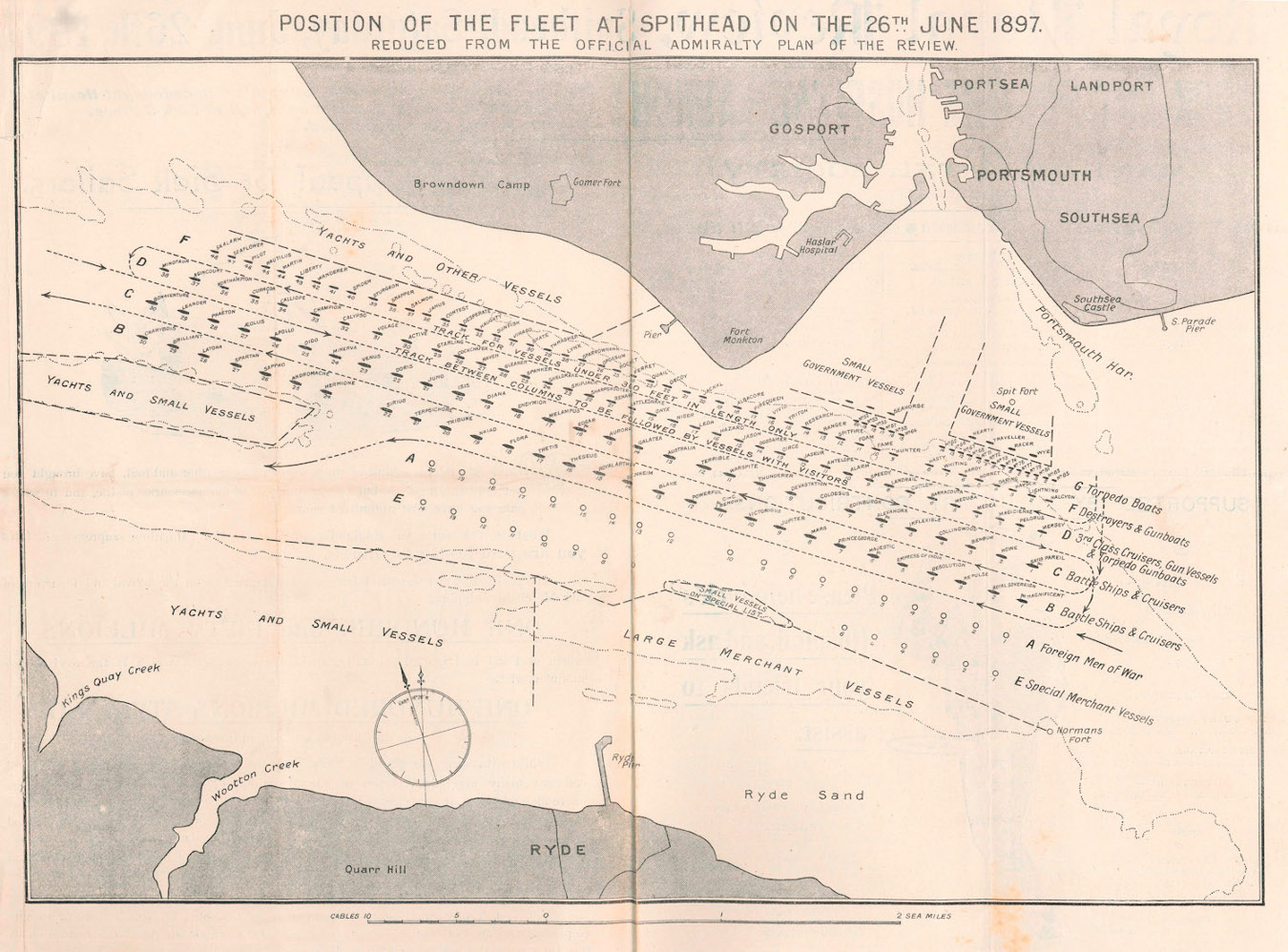 Layout of the Fleet at Spithead Review in 1897.
Layout of the Fleet at Spithead Review in 1897.The place - Spithead, the home anchorage of the Royal Navy.
The date - the 26th of June 1897. It is the year of Queen Victoria's Diamond Jubilee.
The occasion - the Fleet Review of the Royal Navy, at that time the most powerful sea-force in the world.
The ships of the Royal Navy are drawn up in 4 lines, a total of some 165 vessels.
 Layout of the Fleet at Spithead Review in 1897.
Layout of the Fleet at Spithead Review in 1897.
53 of them are the big heavyweights, ironclads and armoured cruisers, in these pre-Dreadnought days they are the heavy battleships of the time.
Place yourself on the bridge of the flagship, Lord High Admiral, Admiral of the Fleet KB,KG, etc, etc, etc, second only unto God, in charge of the review and the man with whom the buck stops.
Everything seems ready, all is well and then a cheeky little private steam yacht appears between the lines.
You promptly send a picket boat to shoo the intruder away, but Consternation! - - Instead of disappearing, tail between her legs, the intruder dodges the picket boat,
digs her stern in and then, with not only a bone in her teeth but almost a quarter of her hull length out of the water and resting on that bone,
the top her transom level with the water surface and smoke and flames streaming from her funnel the yacht comes romping down between the lanes
at the (then) incredible speed of almost 35 knots, nearly swamping the picket boat with her wake!.
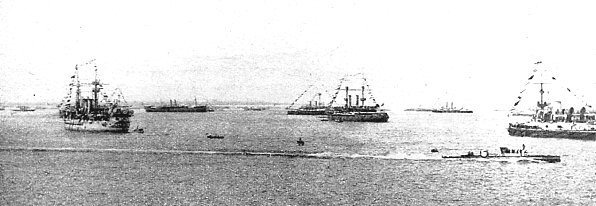
Turbinia speeding down between the Fleet lines
TURBINIA had arrived!, nothing the Navy had could come near her and those on the bridge of the flagship kept well out of the Admirals way!!!.
She was the fastest thing on water of her day,
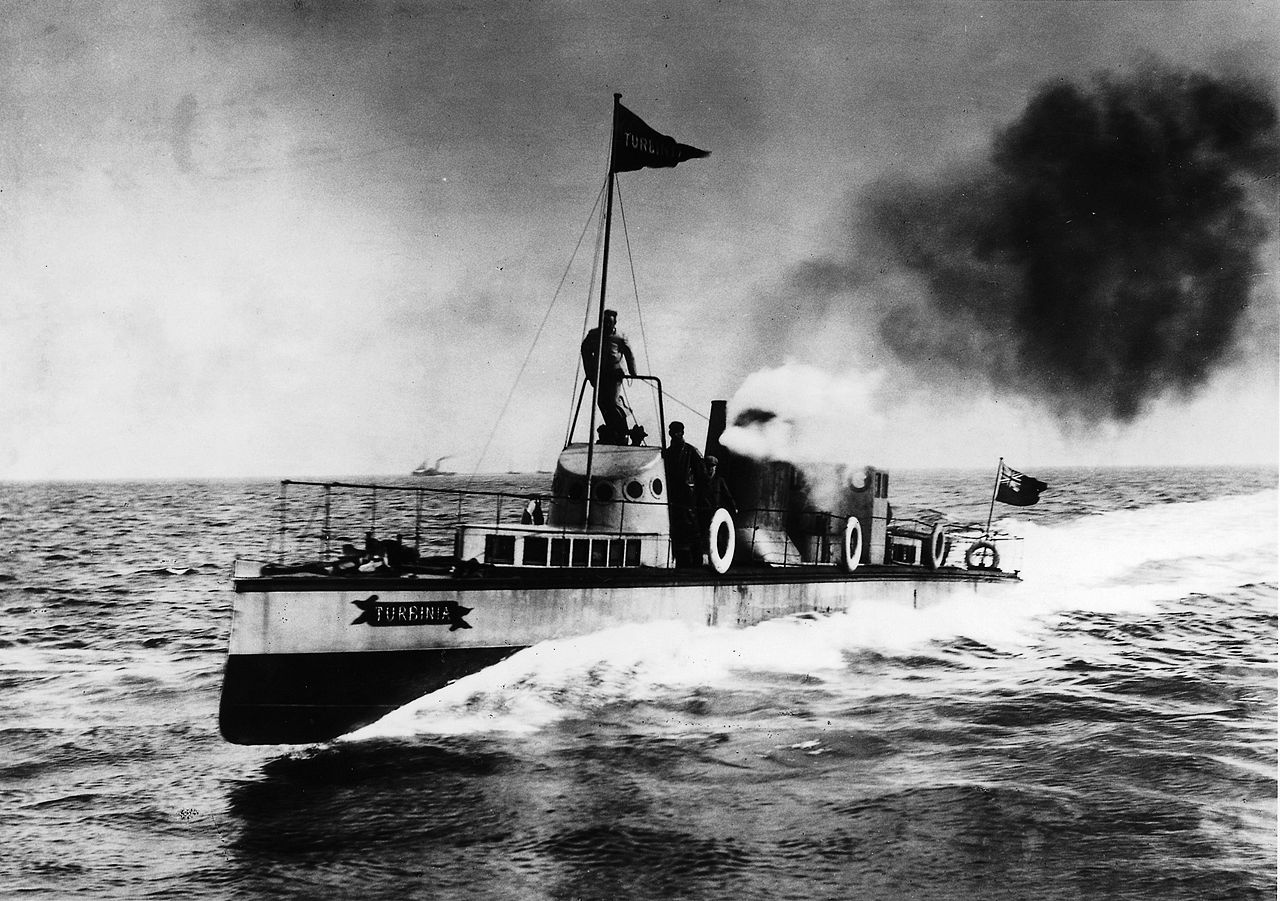
Turbinia at speed, the classic photo
She was the first vessel powered with a steam turbine and she was capable of almost 35 knots.
That's 40 mph or 64 kph and remember, this was in 1897 when land transport was either by steam train or by horse!.
There are literally two frames of a cine film shot of her at speed that still exist

For a change the Navy moved quickly, within two years they had their first turbine powered warships.
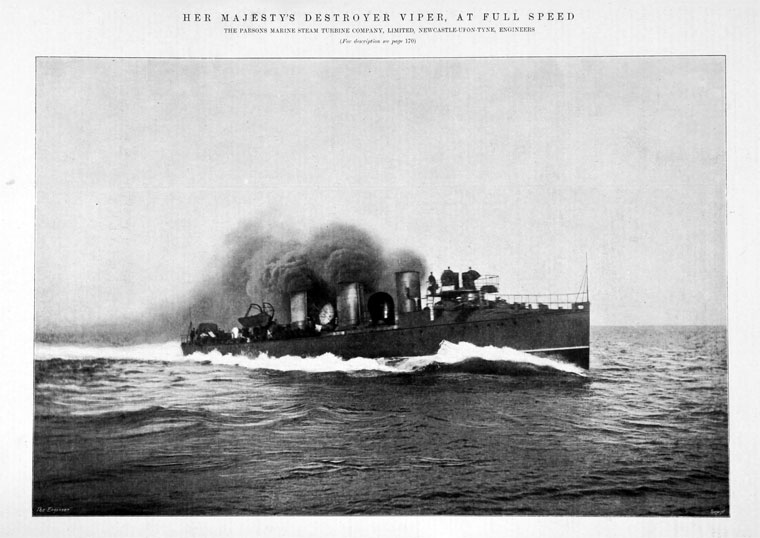
HMS Viper at full speed
A pair of Destroyers named Viper and Cobra and it took them only another seven years to launch the Dreadnought,

HMS Dreadnought
Dreadnought was the worlds first turbine powered battleship, she was the first "All Big Gun" ship and completely rewrote the books on battleship design, she rendered all existing battleships obsolete at a stroke.
Civvy street took notice as well, the first turbine powered civilian ship, the T.S. King Edward appeared on the Clyde in 1901 and remained in service until 1951, not a bad record for the commercial prototype! while big liners such as RMS Mauretania came into service in 1907.
In what was her last public appearance under steam, Turbinia accompanied the Mauretania down river on her trials.
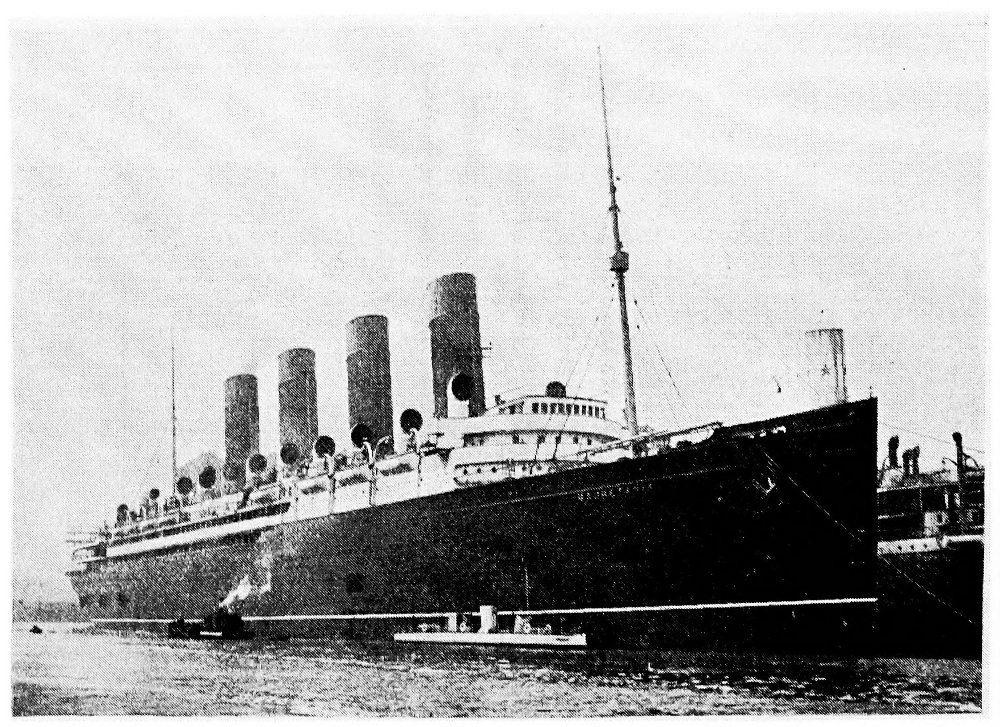
RMS Mauretania with Turbinia alongside
Turbinia was designed by Charles Parsons in 1894, but she was not built in a shipyard.
She was built in the sheet-metal works of Brown and Hood in Wallsend.
Why? Well her hull is only 3/16th of an inch thick and her deck is 1/16th of an inch thick, a bit different from the shipyard standards of those days!
She was launched in August 1894 and initial trials proved not up to design standard, she would only do 20 knots!
Suspecting that he had problems with cavitation, Parsons proceded to invent a cavitation test tunnel and set to work to redesign her propellers.
He finally wound up using three screws, each of 18 inch diameter, on each prop shaft and she had three propshafts!

Turbinia's propellers
This took about the end of 1896 but by then she was averaging almost 30 knots over the measured mile
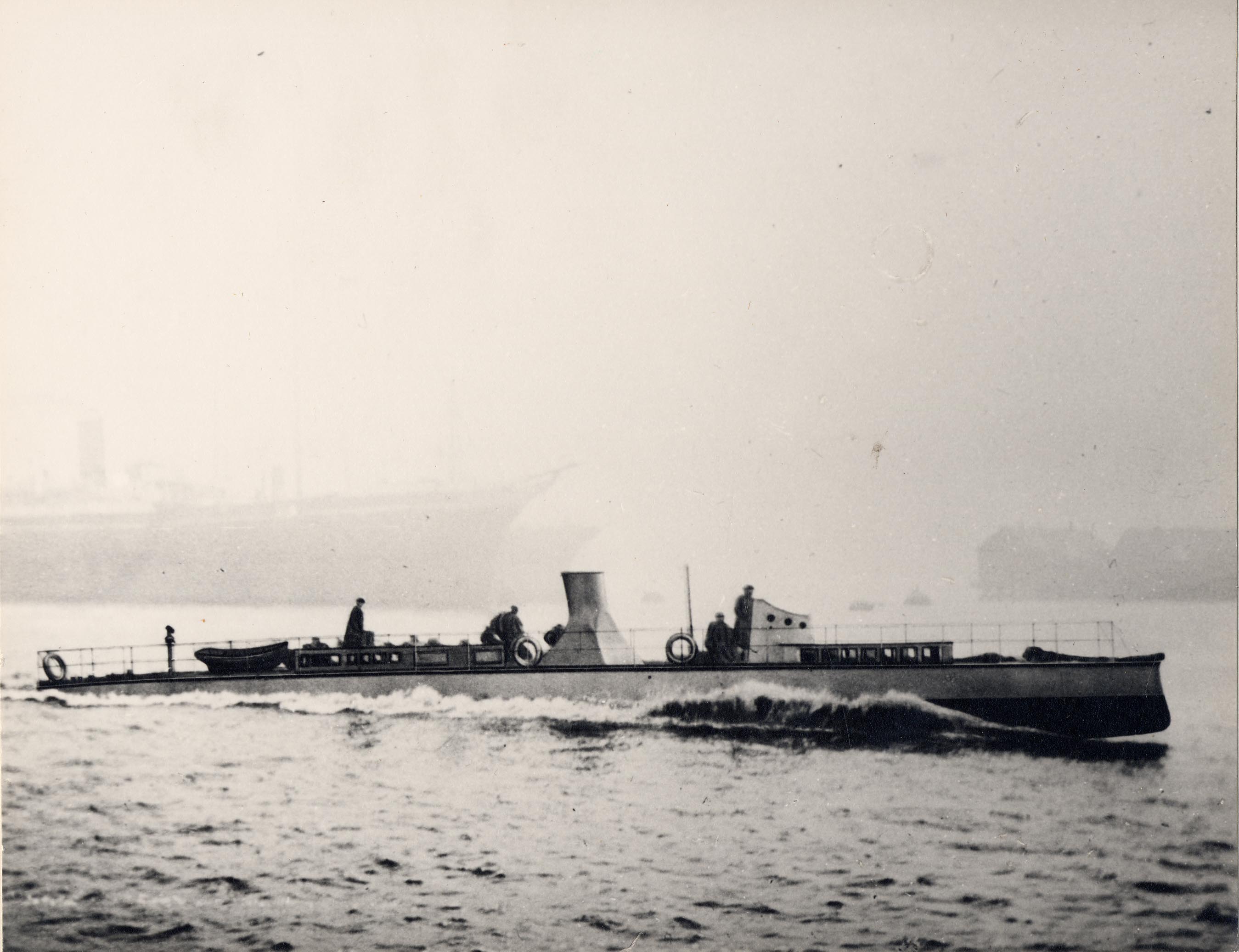
Turbinia undergoing trials
A little more development and by Easter 1897 she was topping 34 knots!
A needle of a ship, at 103ft 9inches long she had only a 9 foot beam and she had a draught of only 3 feet.
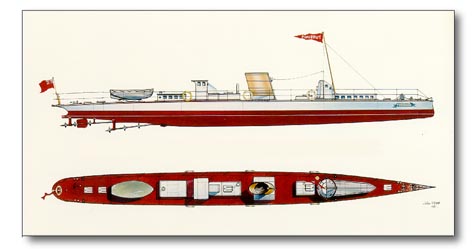
Into that space they squeezed a 3-stage steam turbine driving 3 prop shafts, each shaft having 3 propellers, yes this little 45-tonner had 9 screws!.
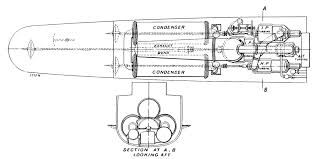
The turbines were fed by a double ended coal-fired boiler, there was very little free space to be found inside her but could she move!

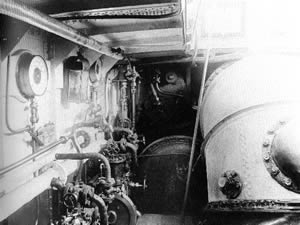
And the best kept secret about Turbinia?.
Simple, she still exists!
Disaster struck Turbinia as she was lying at her mooring on the Tyne in 1907 when she was rammed by a ship being launched from the other side of the river.


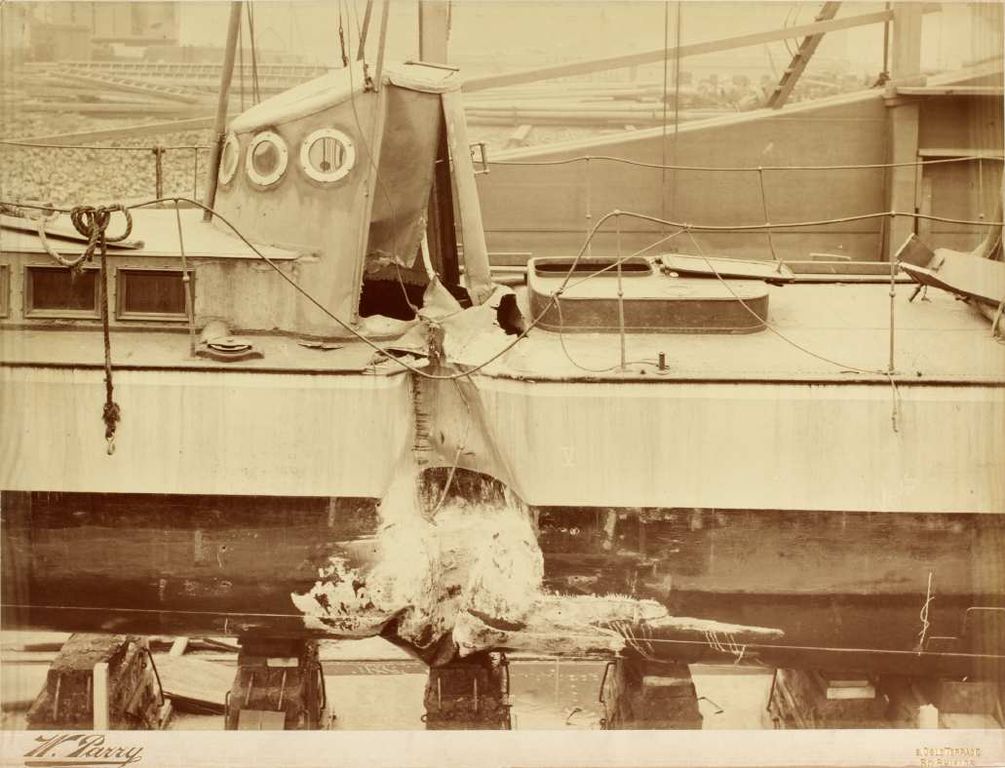
She was lifted onto the quayside but had by then passed her time of use, she was a development craft after all and for the next nineteen years she lay deteriorating until in 1926 she was offered to the Science Museum in London
They decided that they did not have enough space for the complete vessel, but they would take the after part with the turbines and screws so she was cut in half and the stern went South
 Click to view video clip
Click to view video clip The rest of her was left to lie around the yard for another eighteen years until finally in 1944 her remains were donated to the
Newcastle Museum of Science and Engineering in Exhibition Park where they were put on display
Fast forward to 1959. The London Science Museum decided that they no longer wanted the stern section and were going to throw it out.
This did not go down well in the North-East!
The North-East Coast Institute of Engineers and Shipbuilders got together with Newcastle Corporation, funds were raised
and Turbinia's stern was brought home.
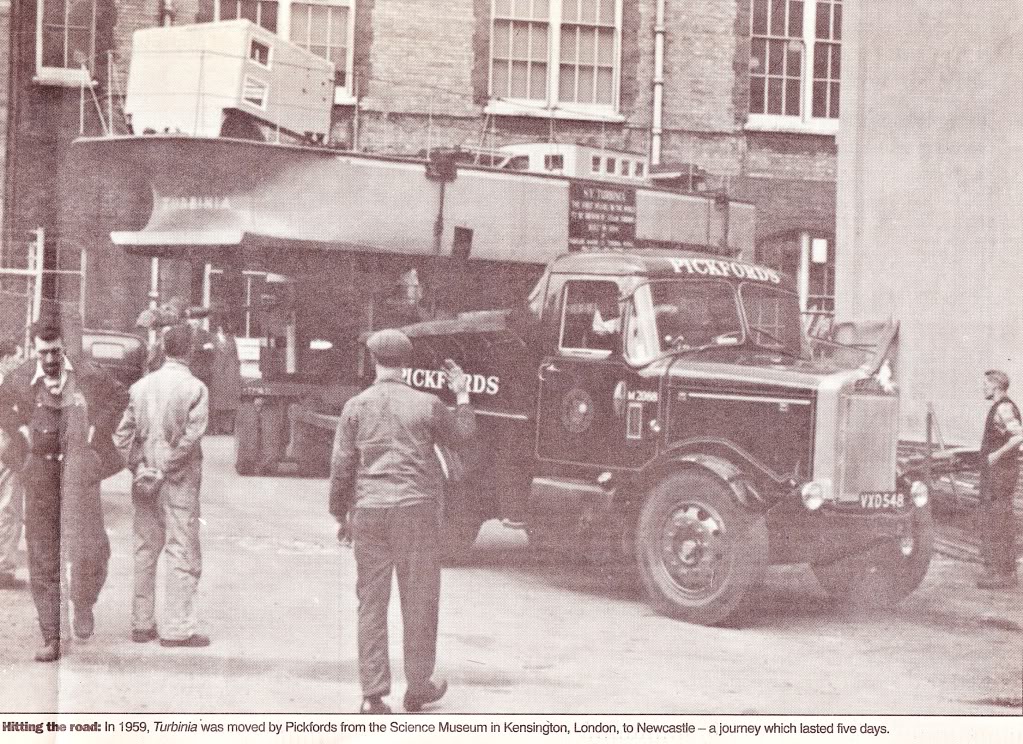
It was reunited with the bow section, the missing and damaged parts reconstructed and then she was restored to near her original Spithead condition.
In 1961 she was put on display in a purpose built annexe in Exhibition Park beside the Science Museum.
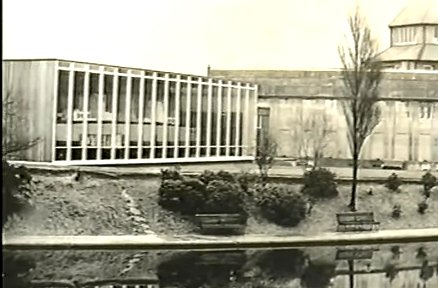

As you can see the annexe was little more than a giant sized display case! But that was not the end to her wanderings!
The Newcastle Science Museum was originally housed in the old "Palace of the Arts" building, left over from the 1929 North East Coast Exhibition.
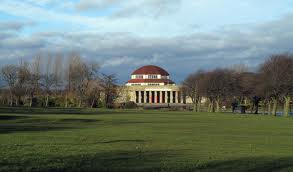
After the Exhibition, it was taken over by Newcastle Corporation to become the Science Museum but it had never been intended as anything other than a temporary building.
By the 1970's the Museum had outgrown it and a new home was needed, for both the Museum and Turbinia.
In 1981 the Museum moved to its current home in Blandford House, Newcastle.
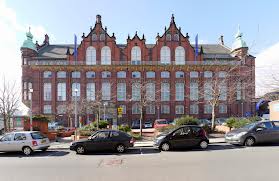
Turbinia however was left behind in her annexe beside the old building and the boating lake in Exhibition Park
She remained there until 1994 when a suitable display gallery for her had been set up at the new Science Museum, now entitled "The Discovery Museum" and she was transported across the centre of Newcastle to her new home.
Click on image to run videoShe is now on display in a dedicated gallery in the Discovery Museum in Newcastle upon Tyne, admission is free! and while you cannot actually go on board her you can go all round about her.
 Turbinia In Her New Home
Turbinia In Her New Home